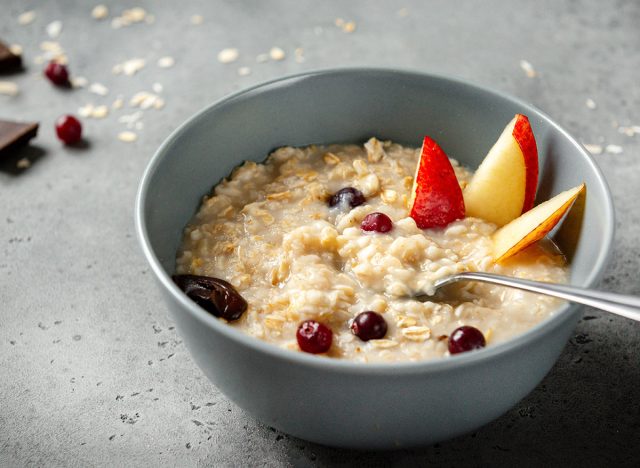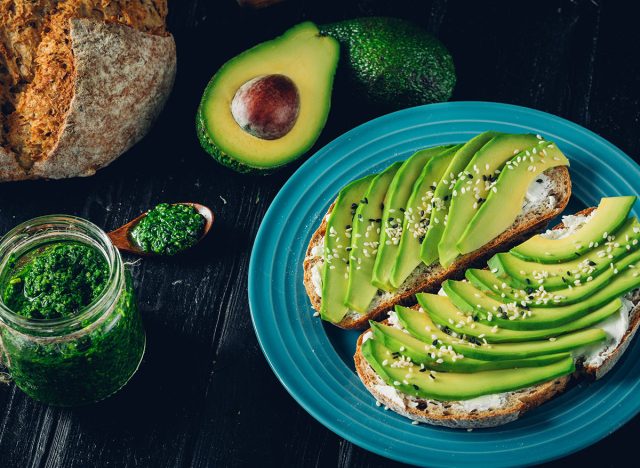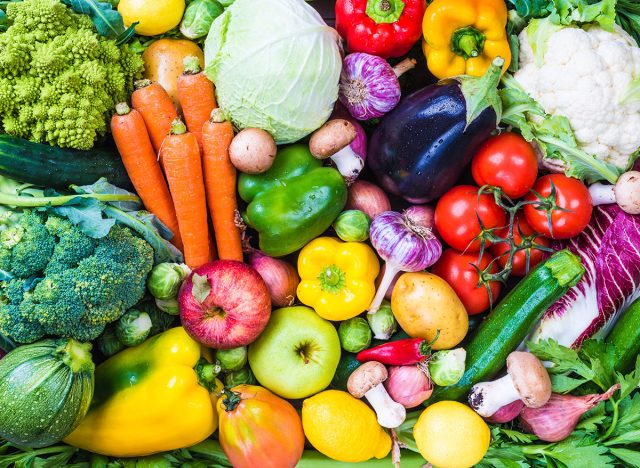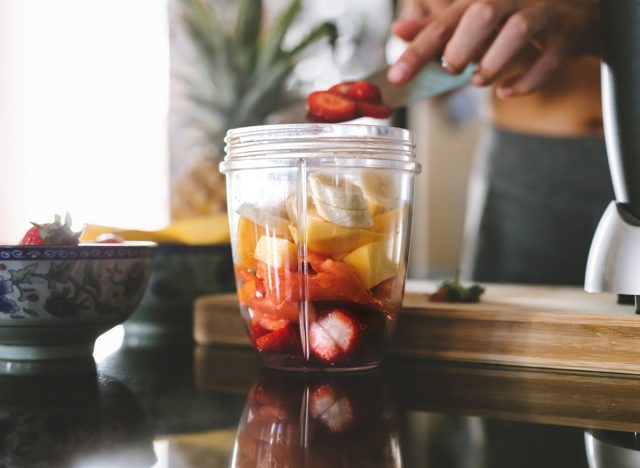Your body undergoes many significant shifts after you turn 50. For example, your heart health changes as the walls of your heart grow thicker and your arteries begin to stiffen more over time. Because of changes like these, your risk for heart disease will continue to increase.
One major risk factor for heart disease as you age is high cholesterol, which can be caused by genetics, smoking, heavy alcohol consumption, and excess weight gain. Thankfully, there are ways you can lower your cholesterol levels with your diet.
To find out more about the relationship between food and cholesterol levels, we talked with a couple of dietitians to get their tips on eating habits that can help you lower your cholesterol after 50 .
Eat more soluble fiber

Now there's even more evidence for oatmeal being one of the healthiest foods you can eat. Soluble fiber, which is found in oats, fruits like apples and pears, and many types of legumes, is a helpful nutrient for lowering your cholesterol levels.
"It is one of the biggest factors that can help lower cholesterol because it dissolves in water to form a gel-like material that can bind to cholesterol," says Amy Goodson, MS, RD, CSSD, LD author of The Sports Nutrition Playbook, "and the goal is to eat 25-38 grams of fiber a day and to make 5-10 of those grams come from soluble fiber."
Choose healthier fats

According to Courtney D'Angelo, MS, RD, author at Go Wellness, one of the best eating habits for lowering your cholesterol after 50 is switching out unhealthy fats for healthier ones.
"Limit the amount of foods that have saturated fats, which can raise your LDL (bad cholesterol) levels, like fried foods, chocolate, and baked goods," says D'Angelo.
Harvard Health states that "healthy fats," which include polyunsaturated and monounsaturated fats, can help lower your risk of disease. D'Angelo suggests replacing saturated and trans fats with these healthier fats, which you can get from foods like olive oil, canola oil, lean meats, nuts, avocados, and fish.
Eat fruits and veggies

A common mistake made by many Americans is forgetting to incorporate enough fruits and vegetables into their diet. And if you're trying to lower or prevent high cholesterol, D'Angelo says that getting enough of these foods becomes even more important.
"Consistently eating fruits and veggies can increase important cholesterol-lowering compounds, called plant stanols or sterols, which work like soluble fiber," she says.
Apples specifically have been known to help with lowering cholesterol because of a specific type of soluble fiber they have called pectin, and grapes have also been found to help decrease LDL cholesterol and improve gut bacteria diversity in recent studies.
If apples and grapes don't pique your interest, produce like pears, apricots, avocados, Brussels sprouts, broccoli, and carrots are all high in soluble fiber as well and can help you manage your cholesterol levels.
Eat small, frequent meals

Losing weight in a healthy, sustainable way can also help lower your cholesterol after 50. "Research suggests that individuals who lose 5-10% of their body weight can lower their total and bad (LDL) cholesterol levels," says Goodson.
To jumpstart weight loss, Goodson suggests eating smaller, more frequent meals that are high in fiber and protein, because "both slow digestion, which helps you get full faster and stay full longer."
You may want to speak with your doctor first before attempting to lose weight. This way you can make sure it's necessary and that you're doing so in the healthiest way for your body.
No comments:
Post a Comment